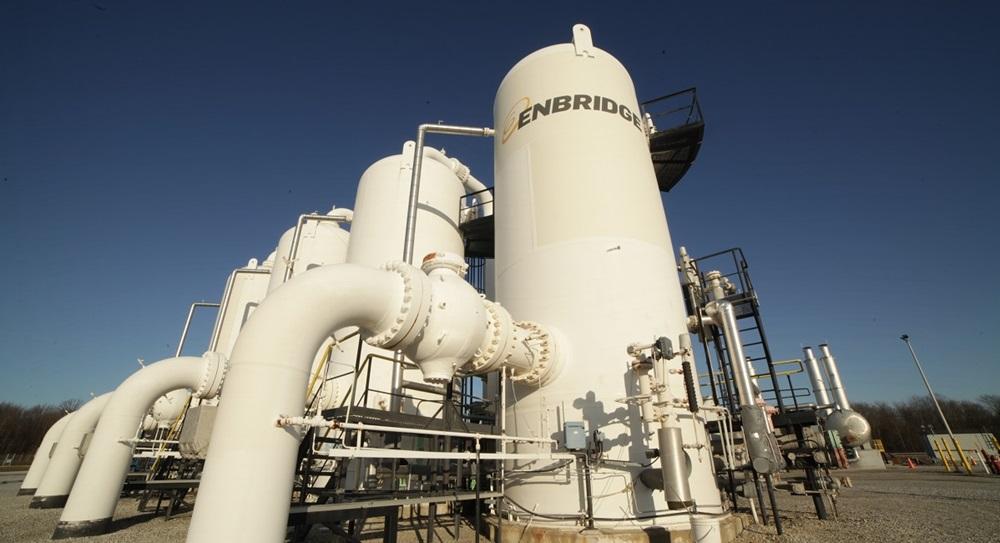Enbridge: The Importance of Innovation
Most of us, at one time or another, have had a creative idea for making things better at work. When we take those ideas and bring them to application? That’s innovation.

Originally published in Enbridge's 2020 Innovation Report
Innovative organizations are inherently adaptable to the external environment—reacting faster, effectively managing risk, capturing opportunities. Fostering an environment that inspires creativity leads to improvements in productivity and value, as well as solutions to some of our toughest challenges.
At Enbridge, we know that it takes true depth of knowledge married with multi-disciplinary collaboration to solve our most complex challenges.
We encourage innovation at all levels, across and within all business units through a structured framework that helps us gather and act on ideas.
Through the process of “roadmapping,” we help teams to identify the needs to be addressed and to sketch out short-, medium-, and long-term areas of focus. Through structured ideation challenges, we crowdsource ideas from Enbridge team members.
From there, we review and refine the most promising concepts for resourcing and execution as innovation projects designed to change the way we work and help lift our company to new levels of performance.
Through innovation, Enbridge is helping to deliver our energy future.
Our progress: ‘Excellerating’ ideas
Sharing our thoughts and ideas is an important part of being an innovative company. Enbridge’s Innovation, Research and Development (IRD) team knows it takes collective intelligence to solve our most complex challenges.
Since the introduction of our innovation framework two years ago, over 5,000 employees have signed in to our ideation platform, dubbed Excellerate, with nearly 3,000 taking part in ideation challenges—ranging in size from enterprise-wide opportunities to reduce GHG emissions and energy consumption, to department-level challenges seeking to uncover opportunities for process innovations. These opportunities to contribute ideas and comments are widely welcomed by staff, and have helped build a catalogue of over 300 innovation and R&D opportunities.
Beyond our ideation platform, IRD has also introduced:
- an award program to recognize innovation success.
- a new innovation training course to help establish a baseline understanding of innovation terms and practices.
- an open-to-all-employees tool allowing team members to learn more about previously identified ideas, and make direct connections to teams that can report progress to date.
A four-step process
Although innovation should not be a rigid process, it needs just enough structure to establish a consistent standard of practice. The innovation process at Enbridge provides this structure to help employees navigate and tap into the creative process through a simple four-step process.
Need
To determine a need, teams spark an inquiry by using open-ended questions which may lead to identifying current challenges, opportunities, or problems. Needs can be identified through day-to-day work, roadmapping, or facilitated sessions to identify the outstanding opportunities and challenges facing the team or project.
Ideate
Ideation is the process of collecting, collaborating on and refining ideas that address issues and challenges. This can occur in multiple ways: ad-hoc conversations, targeted meetings, email exchanges, face-to-face workshops and constructed virtual environments. During the ideation phase, insight, knowledge and input are sought from multiple parties to drive inspired thinking and generate or develop new concepts.
Submitted ideas can be evaluated by all Enbridge employees, who provide their comments and endorsements for promising ideas that have high potential to achieve success and add business value. An expert review panel selects a short list of these promising ideas for promotion to the third phase.
Execute
In this phase, the short list of prioritized ideas that advanced through initial screening undergoes a more detailed expert review. The remaining projects, deemed worthy of further exploration, are advanced to the various project sponsors for formal allocation of financial and staffing resources. Successful projects will typically pass through a pilot phase and may be modified through lessons learned. Successful results move forward for implementation.
Operate
In the Operate phase, projects previously selected and tested are now fully implemented in the business area—with the new technology or process becoming part of day-to-day activities. Organization-wide communication introduces the innovation to employees, explaining the nature of the innovation and its anticipated impact. Achievements are recognized, and lessons learned are collected. Projects making it to the Operate phase are run through Enbridge’s Management of Change process, which ensures risks are reviewed and addressed in an efficient, streamlined manner.

